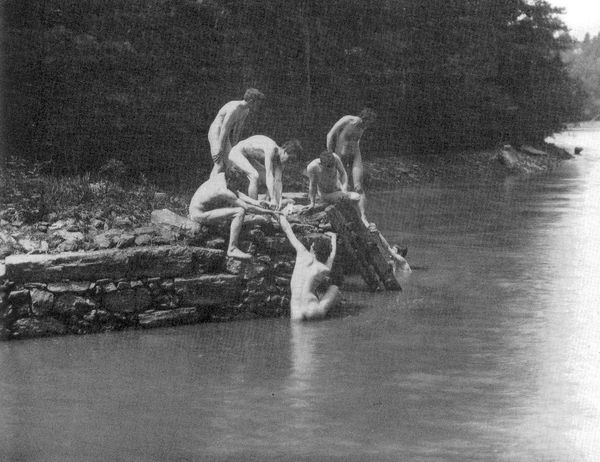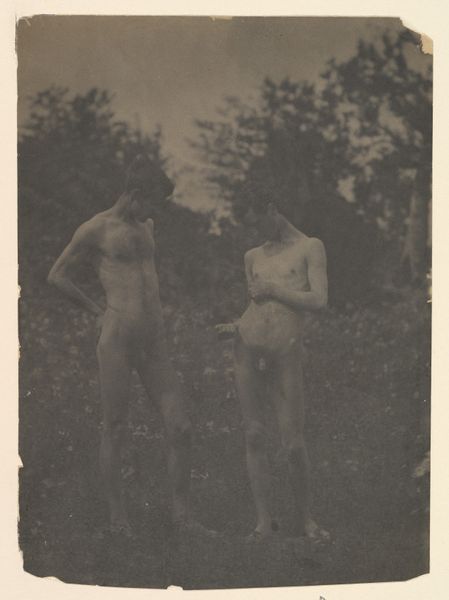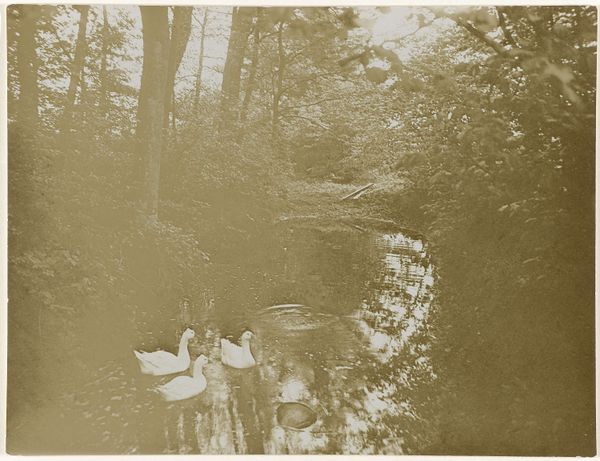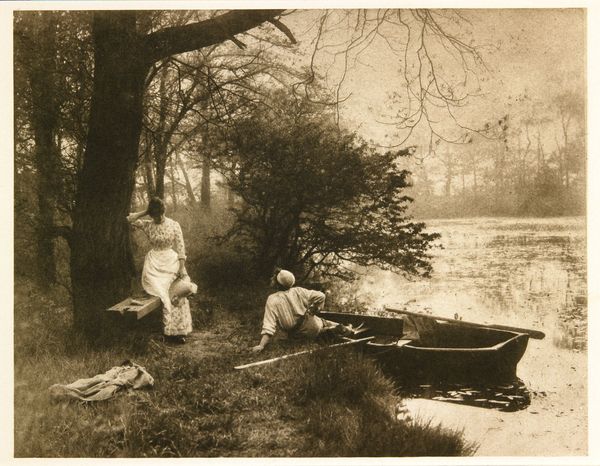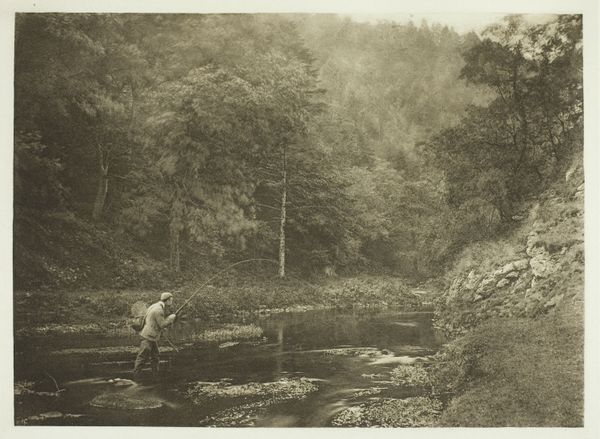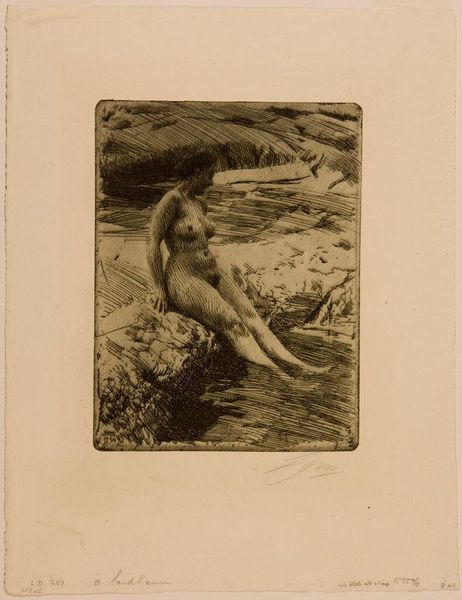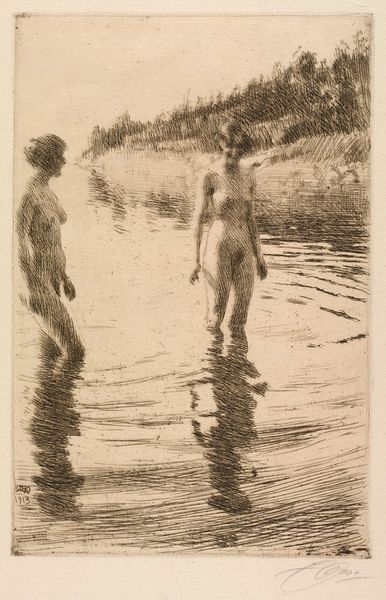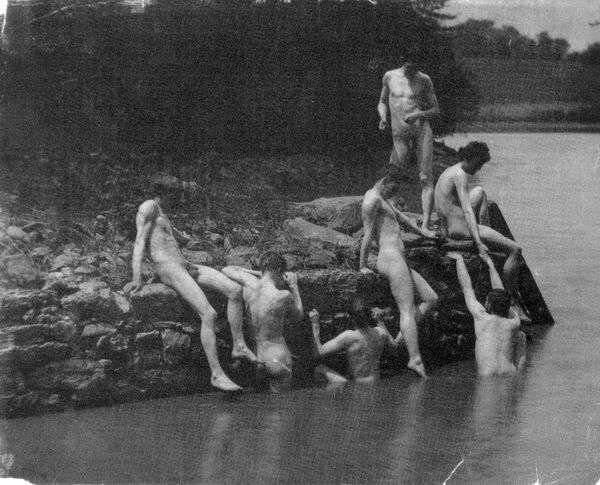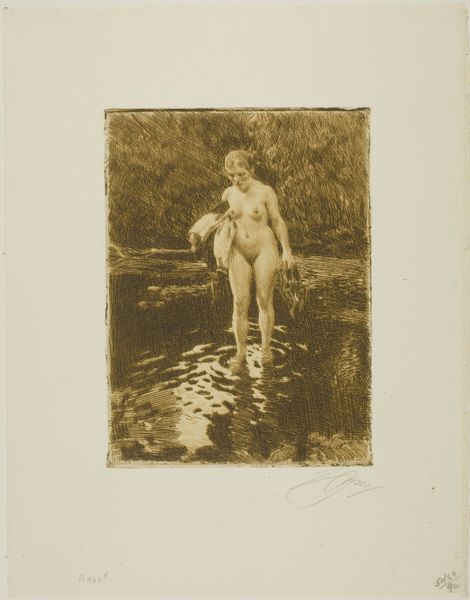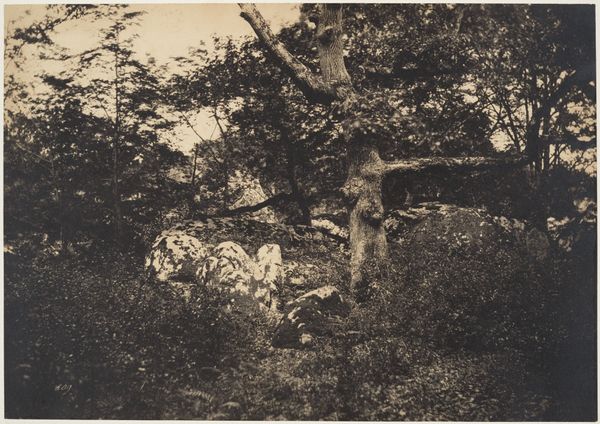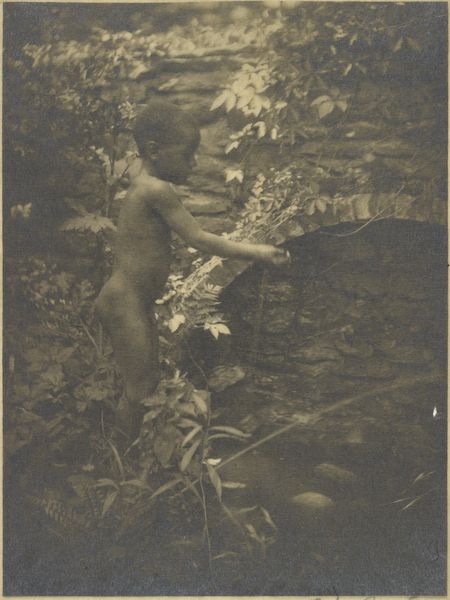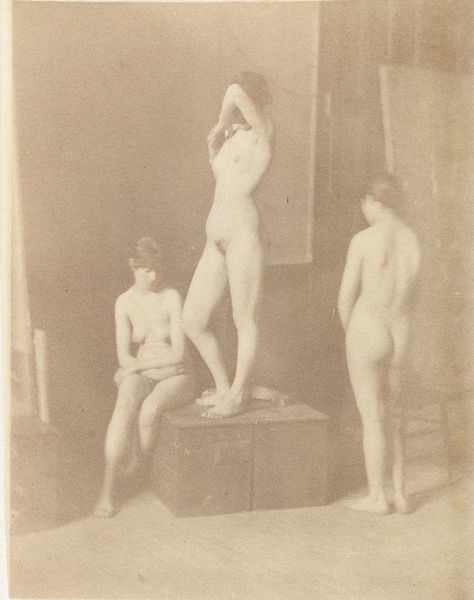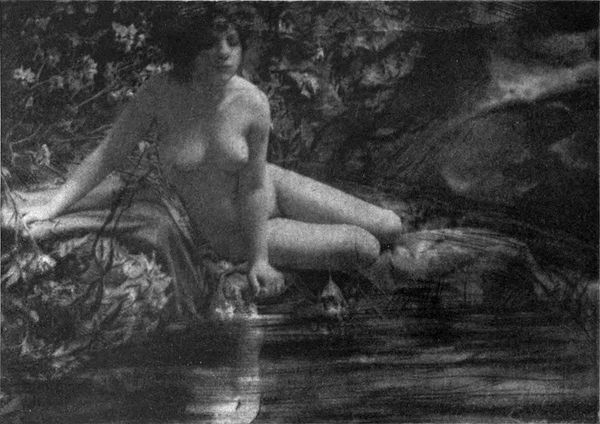
Copyright: Public domain
Curator: Here we have "Study for The bathhole" a gelatin silver print from 1883, created by Thomas Eakins. It shows a group of young men bathing outdoors, right by what looks like a creek in the woods. The tonal range, being monochrome, gives it this otherworldly, idyllic feel, but with a strange undercurrent to it. Editor: Whoa. My first thought? It feels surprisingly intimate for a group scene. The monochrome palette washes it with this timeless glow but something about the composition makes me think of a very elaborate staging. Did they know they were being watched, documented? I get a sort of stolen-moment, or maybe very carefully curated moment vibe here. Curator: Eakins was deeply invested in realism and scientific accuracy, particularly in depicting the human form, so, the "stolen moment" aspect makes some sense. Eakins even built a waterproof camera box to enable photography of his subjects under water! Some interpreted him celebrating a certain ideal form of male athleticism but for me it feels like there's some cultural commentary on the public and private perception around representations of the male body. Editor: "Certain ideals" is definitely a strong symbolic element. The postures—are those purely spontaneous? The man with arm raised—classical references leap to mind, heroic sculptures and so on, even with its intimate or reportage aesthetic. Plus, water—universal symbol of purification, change... is Eakins reflecting a rite of passage here? This is staged to portray the artist's vision of something. It just oozes this sense of intention behind something that seems casually arranged, almost candid. It gives me the shivers. Curator: You've pinpointed something quite key: Eakins' process. Yes, photographs as studies. So, he used these to achieve realism in painting. The photograph becomes a tool—both capturing a 'real' moment, yet, inevitably shaping it through selection, angle, and perspective. Its an insight that photography freezes time and space, and allows its capture later at one's convenience. Editor: Okay, the artist freezing a bit of a homosocial paradise – a world, that still to some degree lives in the back of some collective imagination... Makes me think: What narratives do we lose by fixating so heavily on heroic postures, ideals, when true raw joy and maybe awkwardness or surprise happens when we do not flex? Curator: Absolutely! These staged elements bring to the fore an eternal dance between objective reality and projected symbolism that continues through visual cultural. Well, this definitely made me reflect on this idea and image with renewed questions. Editor: Right? I'm also walking away wondering about what isn't explicitly shown but deeply felt—how much art reflects both the seen and unseen cultural narratives that continue shaping perceptions even now.
Comments
No comments
Be the first to comment and join the conversation on the ultimate creative platform.
